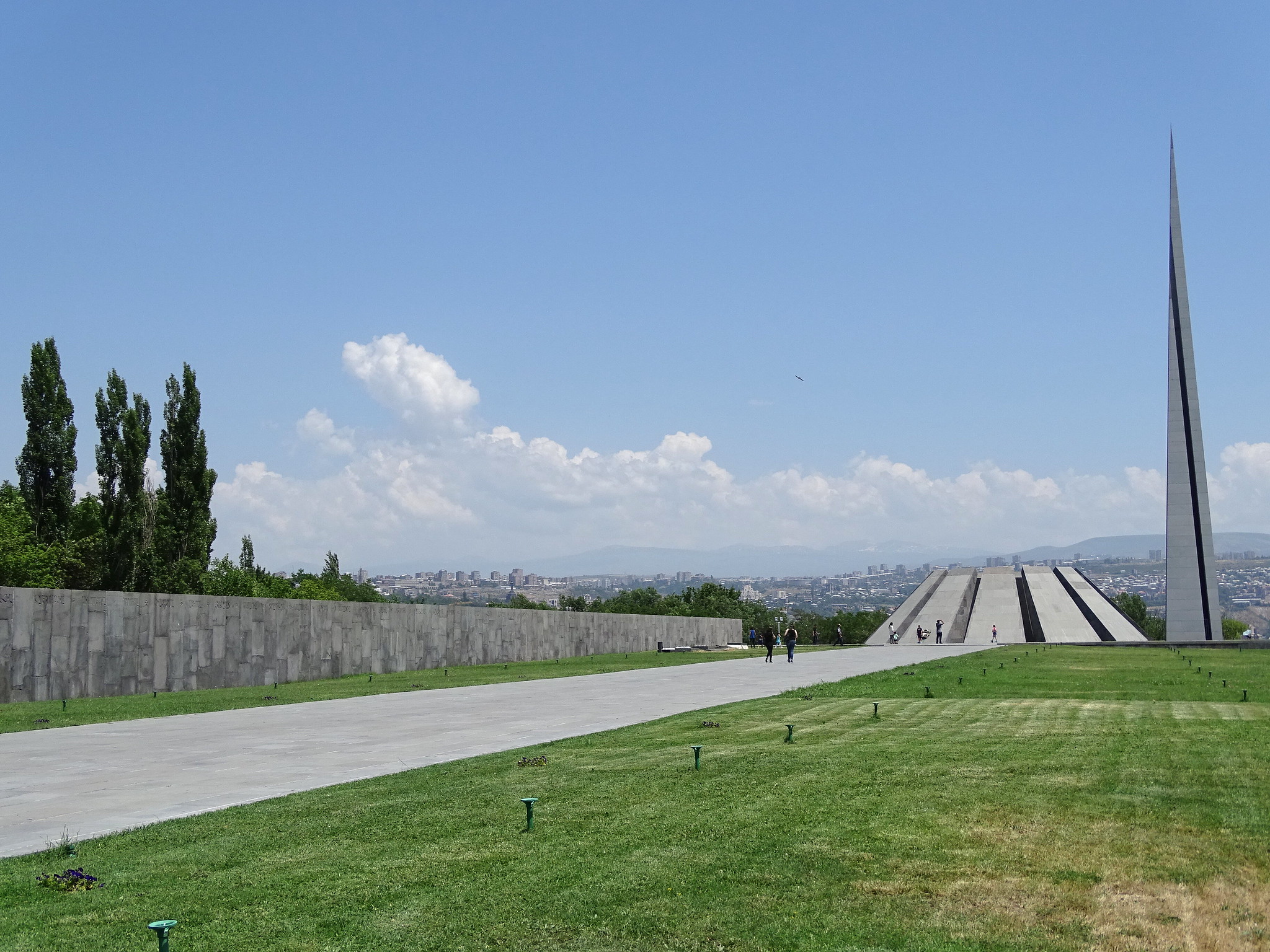Our concierge services provide unparalleled support to ensure your visit to the Armenian Genocide Memorial is both meaningful and seamless. Situated atop Tsitsernakaberd Hill in Yerevan, this solemn monument honors the victims of the 1915 genocide. Our concierge services can arrange guided tours, transportation, and accommodation, allowing you to fully immerse yourself in the historical significance of Tsitsernakaberd. The Armenian Genocide Memorial, known locally as Tsitsernakaberd, stands as a poignant reminder of one of history’s darkest chapters. Let our concierge services enhance your visit, giving you a deeper understanding and respectful commemoration of this crucial site.
Nestled atop Tsitsernakaberd Hill in Yerevan, Armenia’s capital city, stands a powerful and poignant monument that is a testament to one of the darkest chapters in human history. The Armenian Genocide Memorial, known locally as Tsitsernakaberd, is a somber yet striking tribute to the victims of the 1915 genocide. This article delves into the significance, architecture, and visitor experience of this important landmark, offering insights for those seeking to pay their respects and learn about Armenia’s painful past.
A Brief Historical Context
To understand the gravity of the Armenian Genocide Memorial, one must first grasp the historical context that necessitated its creation. The Armenian Genocide, which began in 1915 during World War I, saw the systematic extermination of approximately 1.5 million Armenians by the Ottoman Empire. This tragic event, recognized as the first modern Genocide, has left an indelible mark on Armenian culture and identity, shaping the nation’s collective memory and international relations to this day.
The idea for a memorial to honor the victims of the Genocide emerged in the 1960s, during a period of relative openness in the Soviet Union. After years of suppression, Armenians were finally able to publicly commemorate their losses. The memorial complex was designed by architects Sashur Kalashyan and Lyudmila Mkrtchyan and officially opened in 1967, becoming a focal point for national mourning and remembrance.
Architectural Symbolism and Design
The Armenian Genocide Memorial is a masterpiece of symbolic architecture, with every element carefully chosen to convey deep meaning. The central feature is a 44-meter-high stele split into two unequal parts. This represents the Armenian people, broken but standing tall, with a small gap between the halves symbolizing survival and rebirth.
Surrounding the stele are twelve slanted basalt slabs arranged in a circle, representing the twelve lost provinces in present-day Turkey. At the center of this circle burns an eternal flame, a powerful reminder of the enduring memory of the victims and the inextinguishable spirit of the Armenian people.
Adjacent to the main monument is the Wall of Remembrance, a 100-meter-long basalt wall inscribed with the names of towns and villages where massacres are known to have taken place. This somber list serves as a geographical testament to the widespread nature of the Genocide and provides visitors with a tangible connection to the many communities that were devastated.
In 1995, the memorial complex was expanded to include the Armenian Genocide Museum-Institute. This modern facility offers visitors a comprehensive look at the events leading up to, during, and following the Genocide. Through photographs, documents, and multimedia presentations, the museum provides a harrowing yet essential educational experience that contextualizes the memorial and deepens visitors’ understanding of this tragic historical period.
Visiting the Memorial: A Solemn Experience
For those planning to visit the Armenian Genocide Memorial, it’s important to approach the experience with reverence and respect. The site is easily accessible from central Yerevan, and guided tours are available for those seeking a more in-depth understanding of the memorial’s significance.
Visitors often describe the atmosphere as deeply moving and contemplative. The stark beauty of the monument against the backdrop of Mount Ararat – a symbol of Armenian heritage – creates a powerful visual impact. Many choose to lay flowers near the eternal flame or spend time in quiet reflection, absorbing the weight of history that the memorial represents.
Annual Commemorations and Global Recognition
Every year on April 24th, hundreds of thousands of Armenians and international visitors gather at the memorial to commemorate the Armenian Genocide. This date marks the anniversary of the arrest of Armenian intellectuals in Constantinople in 1915, which is considered the beginning of the Genocide. The procession to the memorial on this day is a solemn and unifying event for the Armenian people and their supporters worldwide.
The memorial has also played a role in international recognition of the Armenian Genocide. As more countries officially acknowledge the events of 1915 as Genocide, the Tsitsernakaberd complex has become an important stop for foreign dignitaries and heads of state visiting Armenia, further cementing its significance on the global stage.
Preserving Memory for Future Generations
The Armenian Genocide Memorial serves not only as a place of remembrance but also as an educational tool for future generations. School groups regularly visit the site, ensuring that young Armenians and international students alike learn about this crucial aspect of history. The memorial’s ongoing relevance underscores the importance of understanding past atrocities to prevent their recurrence.
In conclusion, the Armenian Genocide Memorial in Yerevan is a powerful symbol of remembrance, resilience, and the enduring human spirit. For visitors to Armenia, a trip to this somber monument offers a profound and moving experience, providing insight into a pivotal moment in history that continues to shape the Armenian nation. As we reflect on the past, the memorial reminds us of the importance of vigilance, compassion, and the pursuit of justice in our shared human journey.

